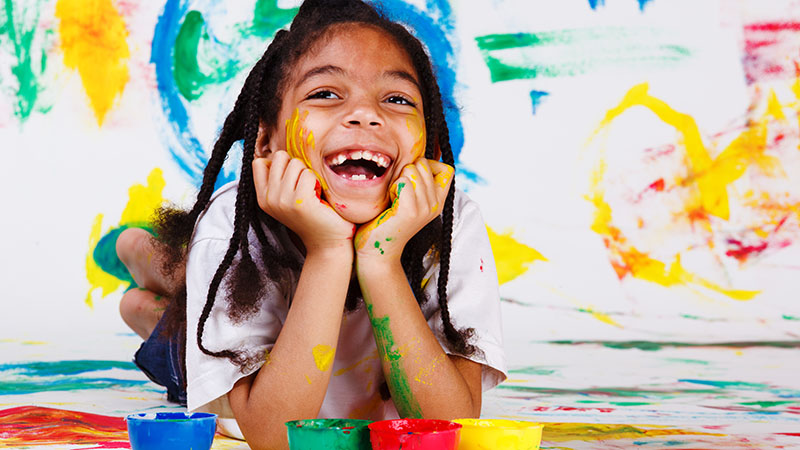Art is my passion. I love to dance, listen to music, and create things with my hands. My basement is full of supplies for many types of art. Although I’m not an expert in these things, I enjoy getting involved with a project and watching it come to life.
My kids were fascinated with mail last week, so I asked them to help me create felt envelopes, stamps and even a mailbag. As a teacher in a classroom, the arts were a way for me to help my students build or demonstrate their learning. My kindergarten class transformed our entire classroom into the Pacific Ocean one year. It featured clay fish, illustrations, informational guides and a huge hand-sewn whale. Although this project took a semester, arts integration can be done at home.
Arts integration is teaching through the arts or using the arts to support children and adults. To demonstrate or construct their learning. It is a way for children to express themselves and learn differently. Your child might be able to write their lyrics to a song about a topic, use dance to express themselves or paint signs of support and care for their neighbours and friends. These are just a few ways to incorporate the arts into your daily activities at home with your child.
Create an Art Area
You can designate a place in your home for your child to keep open-ended materials such as crayons, paper, pencils and other tools. Your child will be able to continue creating on their terms by keeping the space clean and minimally cluttered. This can be helpful when you’re not able to spend time with your child or are completing a project on your own. Children love the opportunity to demonstrate how they can take control of their learning space. It will be amazing to see how materials are used and how current events, books, and school elements appear in the creations.
Use music
Children can learn new concepts and process emotions by listening to and creating music. It can also help them calm down and relax. When my children get rowdy, I keep classical music playing in the background to help us all focus and calm down. My almost 4-year-old son has found a deeper interest in math and reading through songs that focus on the alphabet, words, numbers. Songs can be used to break up the day and transition your child into new activities. When cleaning up after dinner, we listen to the same song. To get us started in the morning, I use the same playlist. My kids love routines that are tied to music. It helps them know what to expect from our day and gives us a way to relax and refocus. Music is a great way for families to have fun, laugh, and play silly games (think Simon’s freeze dance or musical chairs).
Make with recycled materials.
Recycling materials can be a great way for children to save money, reduce waste and give them endless creative possibilities. You can save cardboard boxes, packing papers, paper tubes, tissue boxes and bottles as you go about your day. You might decide to take a more structured approach and create something together like this milk carton birdhouse. You can also provide a variety of materials and support your child while they make. My children have created their roads using cardboard pieces and painter’s tape.
Real-World Connections
Although Zoom calls and virtual classes are great ways to stay connected with family, friends, and teachers, you can also make more connections for real-world learning. As a family, you can set aside time each day for art. Ask your child about what they have learned that day or interests them. Then, go from there! You can encourage your child to make their rocket and learn about the life of an astronaut in space. My children and their neighbours created a visual scavenger hunt with peace rocks. This has provided endless conversation opportunities as they identify each street. It’s a great way to stay connected by using art and letters to decorate postcards or envelopes.
Integration of the arts does not have to be difficult, expensive, or require expert knowledge in any particular arts discipline. You need to be open to trying new things and have the time to be creative. These ideas should have inspired you to explore the possibilities of using the arts as a way to enrich your children’s learning at home.

